The incredible construction of the Panama Canal, the greatest engineering feat of the 20th century
The Panama Canal connects the Pacific and Atlantic Oceans along 82 kilometers and accounts for 6% of world trade. It has been crucial for trade, tourism, and global culture, and also represents a milestone in engineering. The Panama Canal is one of humanity’s most significant mega-projects facing one of its greatest challenges: a severe drought that compromises its operations. The structure has not only been a crucial bridge for trade, tourism, and global culture but also signifies a milestone in engineering and international cooperation.
December 31, 1999, is a very important date in the history of the Panama Canal and the Panamanian nation. After 85 years of U.S. administration, this emblematic canal, which accounts for 6% of world trade and connects the Pacific and Atlantic Oceans along 82 kilometers, returned to the hands of the Latin American country. The transition symbolized a triumph of national sovereignty and highlighted the importance of the project in the global economy and modern engineering.
The Panama Canal, the engineering mega-project of the 20th century
Since the arrival of the first European explorers in the 16th century, the unique geography of the Isthmus of Panama invited the ambitious idea of connecting both oceans to facilitate trade and navigation. Despite numerous studies and attempts by different nations—including the failed effort led by Fernando de Lesseps and the French project, which resulted in the loss of thousands of lives and huge sums of money—the project did not materialize until the late 19th century.
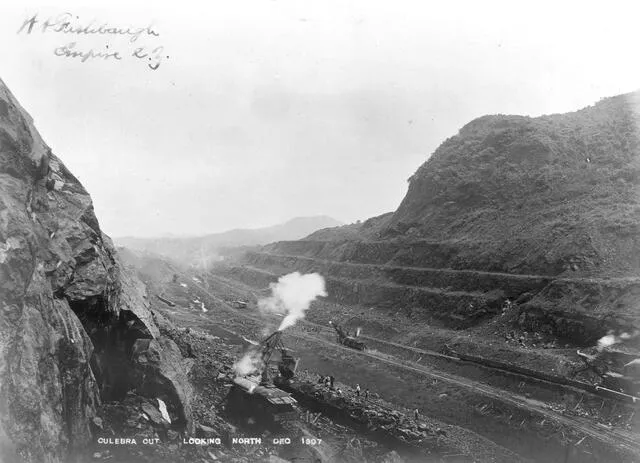
December 1907. A steam train working in the Culebra Cut of the Panama Canal. Workers were excavating the path towards the Atlantic Coast. Photo: AFP
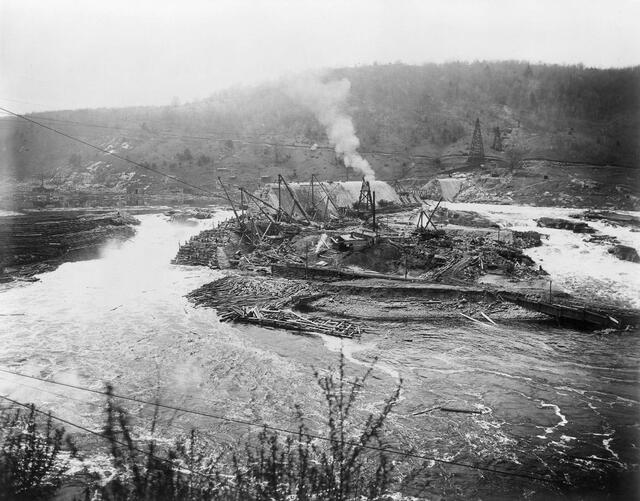
The construction of the Gatun Dam on the Chagres River, Panama, would create Gatun Lake in the northern section of the Panama Canal. The United States took over the construction of the canal in 1904. Photo: AFP
The construction, initiated by French engineers in 1880 and completed by the United States in 1914, claimed thousands of lives and represented an unprecedented challenge to nature. The joining of the Caribbean Sea with the Pacific Ocean transformed global maritime trade.
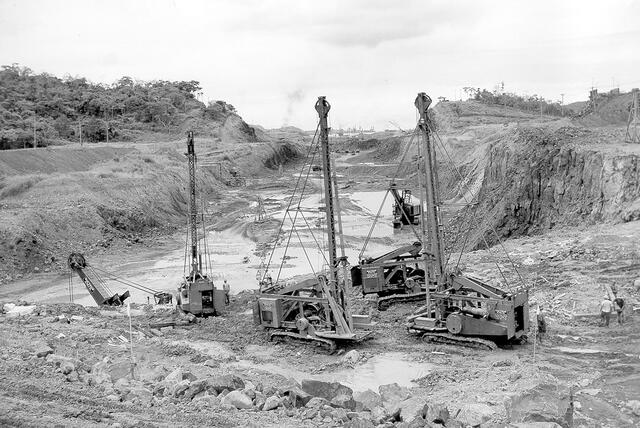
Photograph taken in June 1942, during excavations carried out by the United States at the entrance of the former French canal, 15 km west of Panama City, where the construction of the Panama Canal was planned. Photo: AFP
What is the function of the Panama Canal?
Since its inauguration, the canal has facilitated international trade and significantly reduced distances and costs of maritime transportation. Its administration passed into Panamanian hands in 1999, a historic moment of sovereignty and national pride.
The strategic and economic importance of the Panama Canal for global trade is indisputable, and its efficient operation is vital for economies worldwide.
The Panama Canal faces one of its most significant challenges: a drought threatening its ability to operate efficiently. Rainfall, essential for filling the locks and raising ships, has decreased drastically and jeopardizes the continuity of operations. This challenge is not only a reminder of the importance of the canal but also of the urgent need to address the effects of climate change.
In this situation, it is imperative that both the Panamanian government and the international community seek sustainable solutions to ensure operability.
Investment in water conservation technologies, the study of alternatives for rainwater harvesting, and the implementation of climate change adaptation policies are essential to address this challenge.
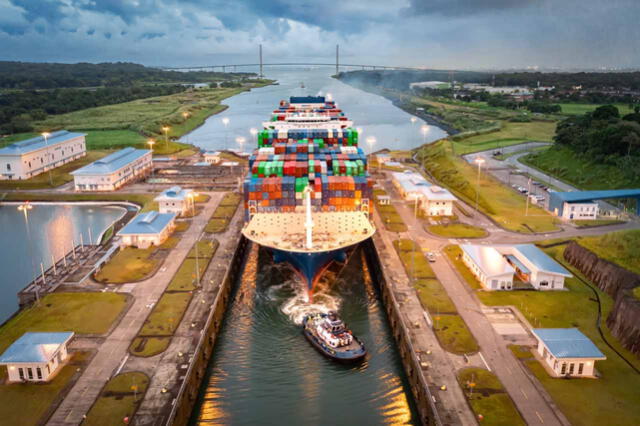
The construction of the Panama Canal was initiated by French engineers in 1880 and completed by the United States in 1914, claiming thousands of lives and representing an unprecedented challenge to nature. Photo: CTL
Why was the Panama Canal built?
The Panama Canal, more than an engineering feat, is a symbol of human capability to overcome natural challenges and unite the world. The current crisis due to drought highlights the need for sustainable management and a long-term vision to ensure its operation for future generations.
At this critical moment, the history and future of the canal call upon us to reflect on our relationship with the environment and the importance of acting responsibly and with foresight.
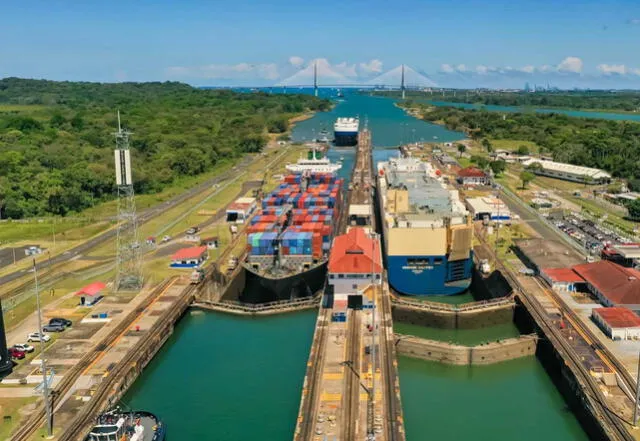
The construction of the canal constituted at the time the most expensive construction project in the history of the United States. Photo: Panama Canal Authority
How much did the Panama Canal cost the United States?
The Panama Canal cost Americans approximately $375 million, including $10 million paid to Panama and $40 million paid to French companies.
Its construction constituted at the time the most expensive construction project in the history of the United States. The additional cost of the lock was $12,000,000.
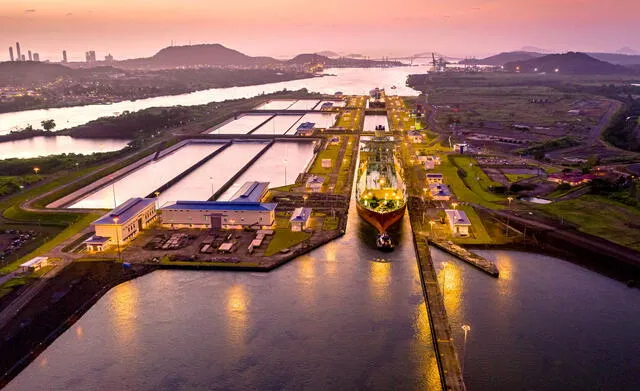
The Panama Canal cost around 375 million dollars, including 10 million paid to Panama and 40 million paid to French companies. Photo: CTL
What is the importance of the Panama Canal for global economies?
The Panama Canal is a vital navigational route that connects the Atlantic Ocean with the Pacific Ocean through the Isthmus of Panama. Its significance for global economies is considerable due to several factors:
- Facilitation of international trade: By providing a much shorter and more direct route for maritime transportation between the Atlantic and Pacific Oceans, the Panama Canal significantly reduces the time and cost of transporting goods. This makes international trade more efficient and accessible.
- Boosting the global economy: By facilitating trade between nations, the canal contributes to economic growth and global development. It allows products to reach international markets more quickly, benefiting both exporters and importers around the world.
- Influence on transportation and goods prices: The efficiency of the Panama Canal in transporting goods can affect transportation costs and, consequently, prices of products in the global market. More efficient transit can reduce shipping costs, thereby lowering prices of imported goods.
- Strategic point for energy trade: It is a key route for the transportation of oil and liquefied natural gas (LNG). The expansion of the canal has allowed larger vessels, including LNG tankers, to pass through, which is crucial for the global energy market.
- Revenue for Panama: In addition to its global impact, the canal generates significant revenue for Panama through tolls and related services. This has a direct impact on the country’s economy, contributing to its GDP and financing infrastructure and public services.
- Infrastructure development and employment: The operation and maintenance of the canal drive infrastructure development and create jobs in Panama and adjacent regions, benefiting the local and regional economy.
- Geopolitical importance: The canal has significant strategic and geopolitical importance, serving as a key point for military and commercial naval mobility. This makes it a strategic asset not only for Panama but also for other nations interested in ensuring and maintaining open international trade routes.
Regarding the language used in Panama, Spanish is the official and predominant language, although other languages are spoken to varying degrees. Among these are English, Ngäbere, Kuna, and others.

